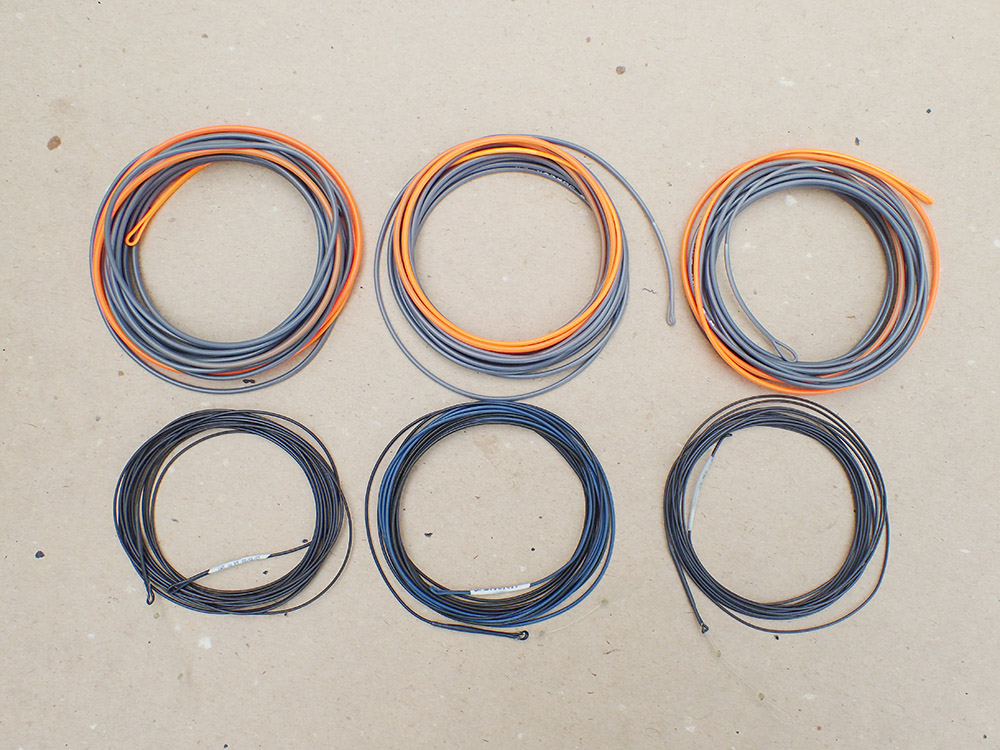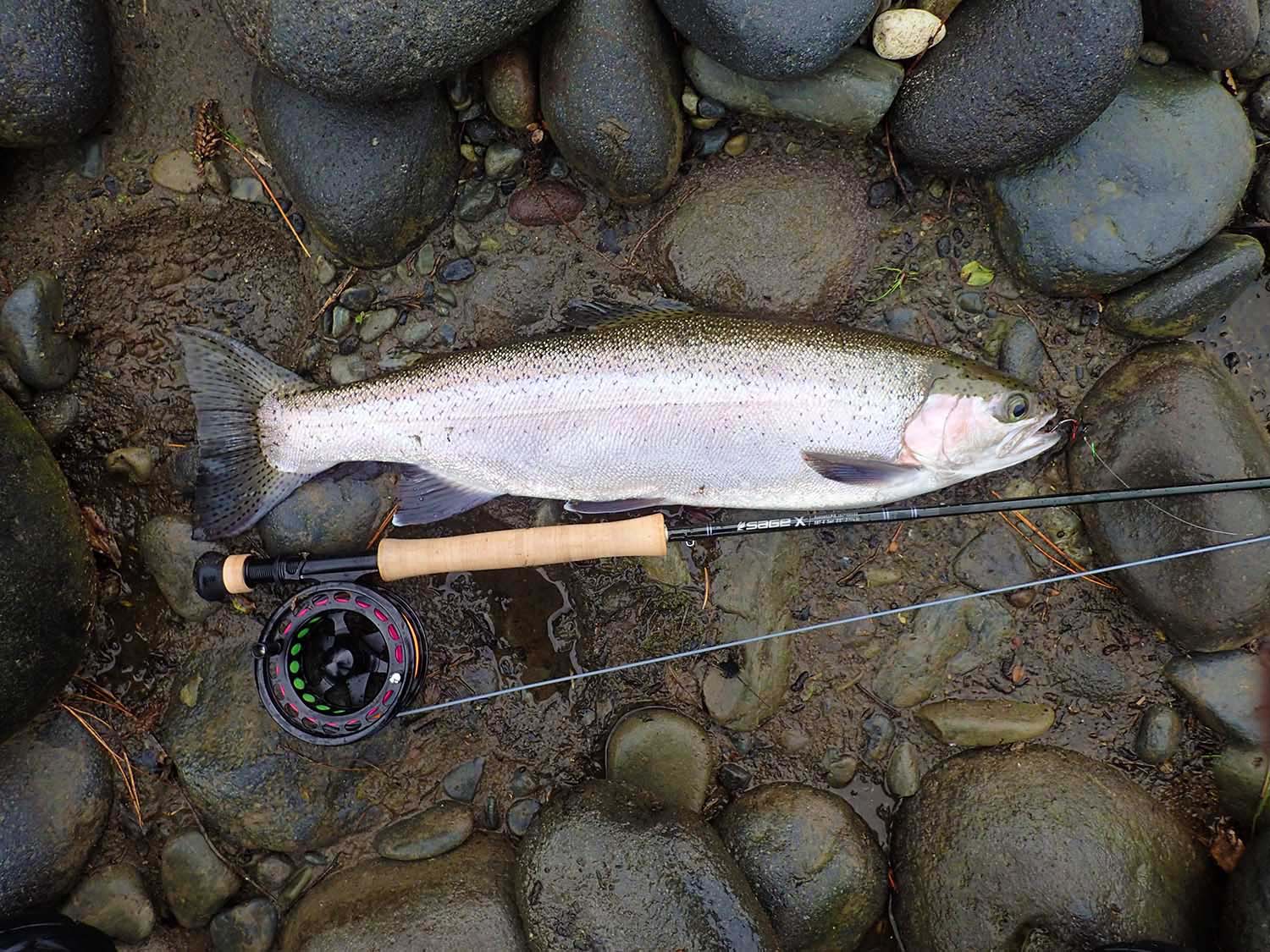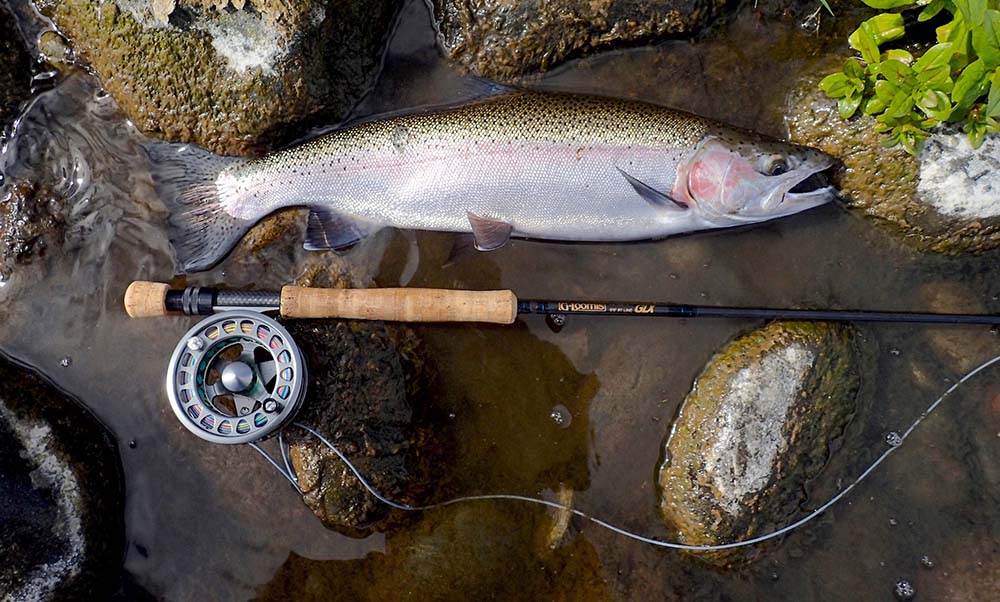Skagit heads are short fat shooting heads designed by steelhead fishermen in the 1990s for casting heavily weighted flies and tungsten sink tips. While the original Skagit heads were floating lines, both Airflo and Rio released heads with intermediate front portions in 2012.
The purpose of the intermediate front sections was to cut through turbulent surface currents - which tossed and pulled on long floating heads - to slow the swing and fish a little deeper. Longer than 20 ft and heavier than 400 grains, the original intermediate heads were designed for longer two-handed rods, and aimed at salmon and steelhead.
Micro-Skagit heads are are short light Skagit heads designed for single hand and short double hand rods, predominantly for targeting trout.
Although floating micro-Skagit heads first hit the market 2015, it was not until early 2019 that Scientific Anglers produced the first intermediate version, as an extension of their Skagit Lite series. Interested in the benefits intermediate heads may have for single-hand-Skagit applications, I was lucky enough to acquire intermediate 150, 180, and 240 grain heads from the local distributor, which I fished alongside the floating versions in the Skagit Lite series that had so impressed me in previous experiments.

The three intermediate heads and three of the sink tips tested
Out of the Box
The intermediate Skagit Lite heads are a dark grey (Heron) with a 1.5 - 2 ft fluorescent orange rear section that is around twice the length of the rear taper. They have a delta profile, with a long gradual front taper that becomes slightly more acute over the last foot or so. Although the intermediate heads match the floating versions of similar grain weight, in length and profile, they are substantially thinner.
Lengths and weights of the Skagit Lite Intermediate heads I tested are provided in Table 1. While the intermediate heads were five or six grains lighter than advertised, the floating versions were six or seven grains heavier than the advertised weights, leading to total weight differences of 11 - 13 grains.

I fished the three intermediate heads on 9-9.5 ft 5 wt and 7wt rods with a variety of sink tips and flies, using mono-running lines of 25-35 lb.
On the water
As with the Scientific Anglers Skagit Lite floating heads, the lengths and profiles of the 150 to 240 grain intermediate heads proved perfect for single hand rods, resulting in surprising distance and presentation for such short heads.
I was, however, surprised to find the intermediate heads had less power to turn over heavy sink tips than their floating counterparts. But once matched with appropriate lighter tips, presentation was significantly better and they were much more adept at slicing through wind - both advantages stemming from a lower diameter.
And even though the Skagit Lite intermediate heads could not handle the weight of tip the floating versions could, they achieved similar or greater depths with lighter tips because the heads themselves sank at 1.5 ips, and of coarse they remained at depth for longer during the swing, and when stripped upstream through current seams.
The following 9-9.5 ft single-hand rod pairings worked exceptionally well for Skagit/Spey casting the three heads I tested:
150 grain: 4wt or presentation 5 wt (e.g. Loomis NRX 5 wt LP),
180 grain: standard 5 wt, and
240 grain: medium-fast 7wt.
When it came to sink tips, Rio Replacement Tips in #5 were brilliant for light and moderately weighted streamers (e.g. #6 Woolly Bugger with 4 mm brass bead) on the 150 grain head, and #6 Replacement Tips worked well with intruder style patterns with 4-5mm brass beads on the 180 grain head.
For casting heavily weighted streamers, the Rio light 3D MOW tip with S3/S4/S5 configuration was excellent on the intermediate Skagit Lite 180, and the S3/S4/S5 and S5/S6/S7 3D MOW tips worked exceptionally well on the Skagit Lite 240.
These 4D density-compensated systems fished exceptionally well with a #6 rabbit streamer with 5 mm brass bead and lead underbody.
Although the progressively increasing tip density is largely intended to reduce hinging or sagging on the swing, it made the 3D MOW tips much easier to cast than 10 ft of T-8 or T-11, as they were easier to lift off the water and they turned over more smoothly.
The Skagit Lite intermediate heads also come integrated with a coated running line, but the advantage of a short head with a thin mono running line, apart from superior casting distance, was that after an initial pull-back mend, one can easily lift the running line off the surface or even feed running line through the guides without disturbing the head - thereby achieving substantial depth before the swing.
At 11-13 ft, the Skagit Lite heads I tested were were easy to cast without the additional casting steps required for longer intermediate heads, such as a roll cast to bring them to the surface. Sustained anchor and touch and go casts, including the snake roll, were all easy with with the tip combinations listed above. The submerged fluorescent orange butt of the Skagit Lite intermediate head series was extremely easy to track, even in water with some colour.
Primary advantages of the intermediate heads, from a fishing perspective, were:
1) they made less splash,
2) they were far less impacted by wind,
3) they remained at depth throughout the swing, where they were less affected by surface currents,
4) below the surface and heron grey, they were less obtrusive than a partially submerged pale floating head, especially in deep even-flowing clear water, where fish have large windows, and
5) they stay deeper when stripped upstream through current seams.

A fresh-run Tongariro rainbow taken with an Intermediate Skagit Lite 180 grain head and a #6 S6 Rio Replacement Tip. A perfect combination for the Sage X-597
Conclusion
Intermediate Skagit heads are not the right choice for swinging flies on the surface, for super shallow water, or in situations where one needs to actively control swing speed or depth, e.g. dropping a fly into a slot and then raising it as it swings into shallow water. They are nevertheless much more effective than floating heads in many fishing situations, including:
1. Sections of river with even depth and flow, including estuaries, as an intermediate head keeps the fly in the zone for longer, with a slower swing, even when imparting action to the fly.
2. Any time one needs the fly to remain deep on the hang down, or when stripped back upstream, e.g. when wading or stripping flies upstream through current seams, including river mouths.
3. Any time a floating head cannot cast a tip heavy or long enough to reach the fish, which happens frequently on large rivers with the lighter Skagit heads used on single hand rods.
4. When complex surface currents toss a floating head about, preventing the tip from sinking and causing the fly to move too fast.
5. Any time splash or a partially submerged floating head is likely to spook fish. Think clear deepish flowing water, as well as lakes.
6. Any time the wind is blowing.
Skagit Lite intermediate heads have become my new standard for targeting sea trout in the lower reaches of medium to large rivers, and in estuaries when currents are ripping and the fish are down deep. I also prefer them for riffles and runs and deep pools on larger rivers, e.g. the Tongariro, and any time I need more depth when fishing the 5 wt single-hand outfits I favour for medium sized rivers.
On many occasions I have taken trout in deep runs and pools having first failed with a floating head.
Having matching intermediate and floating heads - with regard to length, weight and profile - makes transitioning between the two a breeze.

A bright winter steelhead taken on the Tongariro River using a 9.5 ft 7wt rod and a 240 grain Scientific Anglers Skagit Lite intermediate head and S5/S6/S7 3-D Rio MOW Tip. Running line was 35 lb SA flat mono absolute shooting line. Another outstanding combination.
Single Hand Skagit - Science behind the magic |
|
| + | Where it all began |
| + | Head design |
| + | Sink tips |
| + | Casting heavy sink tips |
| + | Running lines |
| + | Reels |
| + | Rods |
| + | Intermediate heads |
| + | Favourite outfits |
| + | Conclusions |
| + | Shootout of 12 Skagit Heads I tested |
| + | Table of Sink Tip Recommendations |
| + | Table of Lengths and Weights of Sink Tips |
Single hand Trout Spey : Getting started with a 9 ft 5wt rod |
|
| + | Getting started |
| + | Rods and Skagit heads |
| + | Sink tips for Skagit heads |
| + | Tippet for Skagit heads |
| + | |
| + | Hybrid heads |
| + | Floating tips for Skagit heads |
| + | Running lines |
| + | Cost effective approach |
| + | Learning to Spey cast |
| + | A final word |
